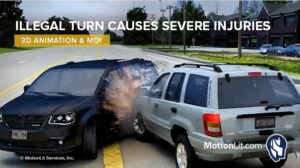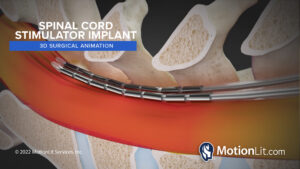Mechanism of Injury Visual Drives Seven-Figure Resolution in Devastating Rideshare Collision
In this case, the plaintiff was riding in the backseat of a rideshare vehicle when the defendant driver in a separate vehicle attempted an unprotected left turn across oncoming traffic. The result: a violent T-bone crash that left her with long-term optic nerve damage and significant vision impairment.
To support the injury claim, the legal team turned to MotionLit to produce a Mechanism of Injury (MOI) animation that demonstrated how the biomechanics of the crash aligned with the plaintiff’s medical diagnosis. The animation precisely illustrated the moment of impact, how rotational force and head movement in the crash could plausibly affect the optic nerve, and why those forces would result in lasting visual impairment.
What set this animation apart wasn’t just its clarity—it was also its credibility. The visual was authenticated and validated by a testifying physician, who confirmed in his expert report that the animation reflected a medically consistent mechanism of injury based on imaging and clinical findings.
This is just one example of how MotionLit’s MOI visuals help trial teams turn invisible trauma into clear, compelling evidence, driving value at mediation, arbitration, or trial.
👉 See how MotionLit’s animations connect medical truth to courtroom clarity. Book your visual strategy session now at MotionLit.com or call (855) 850-0650.







